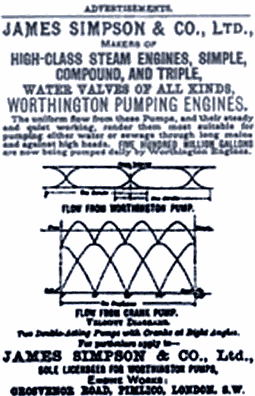|
Brede, East Sussex
Brede is a village and civil parish in the Rother district of East Sussex, England. It is located eight miles (13 km) north of Hastings and four miles (6 km) west of Rye. Features The River Brede, which flows to the south of the settlement, takes its name from the village. The name is derived from the word for ''breadth'' in Old English, and refers to the wide valley which it overlooks. The ecclesiastical parish is teamed with Udimore, Beckley and Peasmarsh; the four parish churches are St George, Brede, St Mary Udimore, All Saints, Beckley and St. Peter and St. Paul, Peasmarsh. The church of St George is a Grade I listed structure. The nave and north aisle date from the thirteenth century, while the chancel and south aisle are built in perpendicular style. It has a tower at the western end, and internally there are two monuments to the Oxenbridge family, dating from the late fifteenth and early sixteenth centuries. At the Western boundary of St George's Churchyard is ... [...More Info...] [...Related Items...] OR: [Wikipedia] [Google] [Baidu] |
Brede Waterworks
Brede Waterworks () is a waterworks Water supply is the provision of water by public utilities, commercial organisations, community endeavors or by individuals, usually via a system of pumps and pipes. Public water supply systems are crucial to properly functioning societies. The ... at Brede, East Sussex, Brede, East Sussex, England. It was built to supply Hastings with drinking water. The waterworks still houses two of the three steam engines that were used to pump water from Brede to reservoirs at Fairlight, East Sussex, Fairlight and Baldslow. Background By the 1890s, Hastings Corporation was faced with increasing demand for water in the town. A recommendation was made that a site at Glynde would be suitable. This site had previously been identified in 1875. Another site identified as suitable was at Cuckmere Valley#West Dean, West Dean, East Sussex. However, amateur geologist and councillor Thomas Elworthy recommended a site at Brede, claiming that its proximity to Has ... [...More Info...] [...Related Items...] OR: [Wikipedia] [Google] [Baidu] |
Avant-garde
The avant-garde (; In 'advance guard' or ' vanguard', literally 'fore-guard') is a person or work that is experimental, radical, or unorthodox with respect to art, culture, or society.John Picchione, The New Avant-garde in Italy: Theoretical Debate and Poetic Practices' (Toronto: University of Toronto Press, 2004), p. 64 . It is frequently characterized by aesthetic innovation and initial unacceptability.Kostelanetz, Richard, ''A Dictionary of the Avant-Gardes'', Routledge, May 13, 2013 The avant-garde pushes the boundaries of what is accepted as the norm or the '' |
Frederick Douglas Miller
Frederick Douglas Miller (6 December 1874 – 7 June 1961) was an English photographer, usually known as F. Douglas Miller. He was born on 6 December 1874, in the small village of Brede, East Sussex, north of Hastings. He was the son of Matilda Goldsmith and Frederick Miller, who married in Eastbourne on 4 March 1874. Matilda Goldsmith was born in Newenden, Kent in May 1848. Fred Miller was born in Hailsham in February 1850. Matilda's father, William Goldsmith was a farm labourer whereas Fred Miller and his father, Edward Miller were both professional photographers (according to their marriage certificate records). His parents settled in Haywards Heath in 1880, and before the end of the century Miller had set up "The Mid-Sussex Photographic Studio" in Haywards Heath, offering photographs "in any size and newest styling" and services including "copying and enlarging". He also photographed outdoor events such as "garden parties". In 1903 he started to publish and sell picture postc ... [...More Info...] [...Related Items...] OR: [Wikipedia] [Google] [Baidu] |
Grade II Listed
In the United Kingdom, a listed building or listed structure is one that has been placed on one of the four statutory lists maintained by Historic England in England, Historic Environment Scotland in Scotland, in Wales, and the Northern Ireland Environment Agency in Northern Ireland. The term has also been used in the Republic of Ireland, where buildings are protected under the Planning and Development Act 2000. The statutory term in Ireland is "protected structure". A listed building may not be demolished, extended, or altered without special permission from the local planning authority, which typically consults the relevant central government agency, particularly for significant alterations to the more notable listed buildings. In England and Wales, a national amenity society must be notified of any work to a listed building which involves any element of demolition. Exemption from secular listed building control is provided for some buildings in current use for worship ... [...More Info...] [...Related Items...] OR: [Wikipedia] [Google] [Baidu] |
Worthington-Simpson
Worthington-Simpson was a British pump manufacturer. Many of their pumps were used in municipal waterworks in Great Britain. The company has its roots in a steam engine workshop founded by Thomas Simpson around 1785. His sons took over the workshop and founded James Simpson & Co., which became Worthington Pump Co. through a merger in 1903, renamed Worthington-Simpson in 1917. It continued as an independent pump manufacturer until 1969, when it became a subsidiary of Studebaker-Worthington. A series of mergers and divestitures followed. The successor company as of 2013, formed through a number of mergers, is Flowserve. Origins In 1785 Thomas Simpson, an engineer, set up the Lambeth Waterworks. At first a small company, it supplied water to parts of Southwark and Vauxhall from pumping works on the south side of the River Thames. Simpson was engineer to this company for the next forty-one years. He also became engineer of the Chelsea Waterworks Company. Simpson set up a work ... [...More Info...] [...Related Items...] OR: [Wikipedia] [Google] [Baidu] |
|




